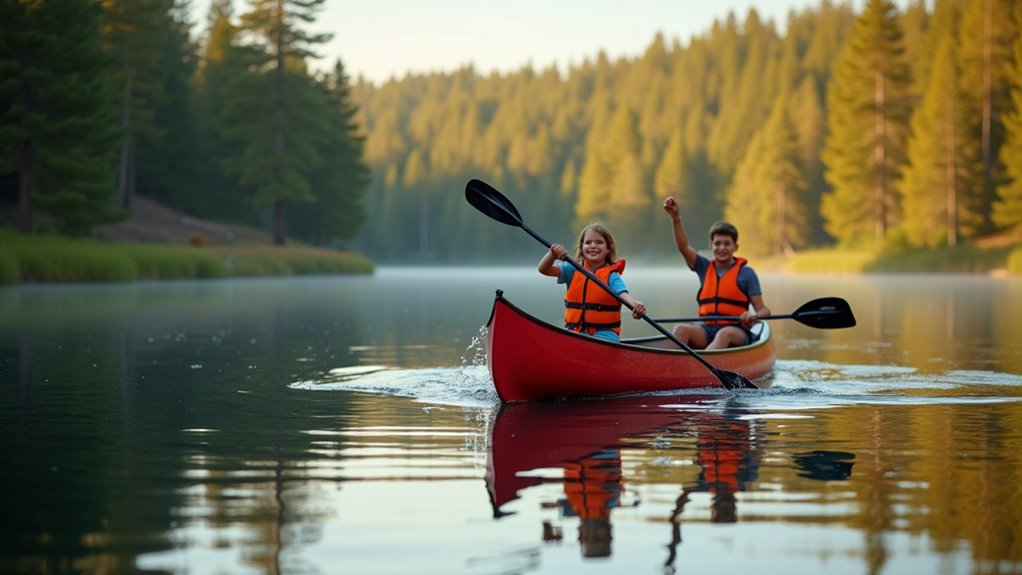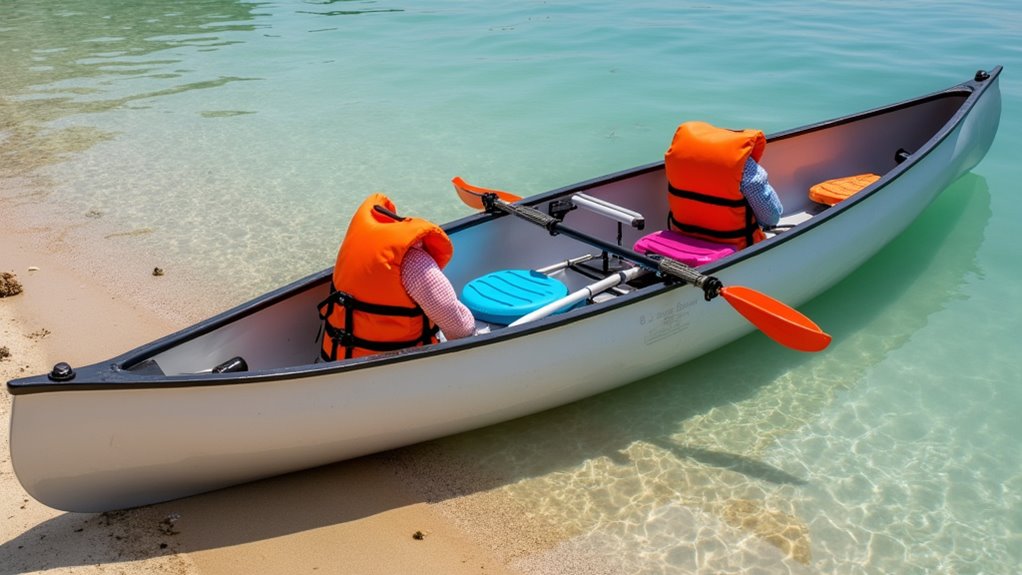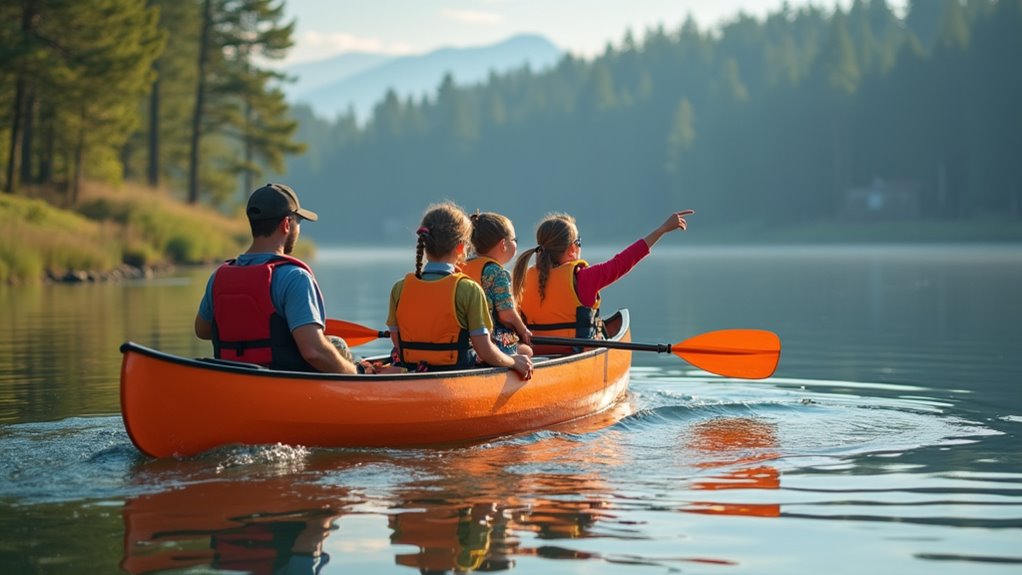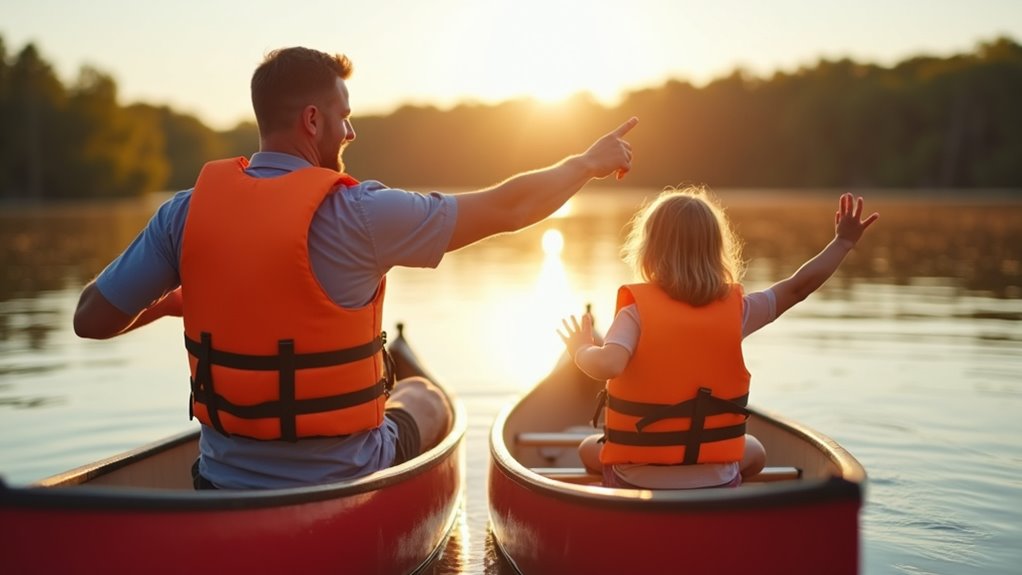Physical Address
304 North Cardinal St.
Dorchester Center, MA 02124
Physical Address
304 North Cardinal St.
Dorchester Center, MA 02124

Navigate family canoeing adventures safely and successfully with these five essential tips that will transform your water outings into unforgettable experiences.
You’ve probably been planning that family canoe trip just as your kids started asking about water adventures—what perfect timing. Taking children on the water requires more preparation than your typical solo paddle, but it doesn’t have to feel overwhelming. The key lies in understanding what makes young paddlers comfortable, engaged, and most importantly, safe throughout your journey. These five essential strategies will transform your next outing from potentially stressful into genuinely enjoyable for everyone involved.

Before you even think about pushing off from shore, you’ll need to match your gear to your young paddler’s size and abilities. Start with properly fitted life jackets—they’re non-negotiable. Kids’ PFDs should be snug but comfortable, allowing arm movement without riding up over their chin.
Choose lightweight paddles sized for small hands and short arms. A paddle that’s too heavy or long will tire them quickly and kill their enthusiasm. Consider adjustable paddles that grow with your child.
Position kids in the center of the canoe where it’s most stable. They can practice paddling techniques without steering responsibility.
Pack extra dry clothes in waterproof bags—kids get wet, guaranteed. Bring along a bilge pump or large sponge for inevitable water accumulation from splashing and exploration.
While canoeing builds water confidence gradually, you might also consider introducing them to other outdoor adventures like glacier climbing trails once they develop stronger physical skills and coordination.
Once you’ve got the right gear sorted, it’s time to map out a route that matches your child’s attention span and energy levels. Start with 30-45 minute paddling segments for younger kids, extending to an hour for teens.
Choose routes with easily accessible beaches, shallow coves, or docks where you can pull over frequently.
Look for spots with interesting features like wildlife viewing areas, small islands to explore, or sandy beaches perfect for snack breaks.
Plan your turnaround point at the halfway mark so you’re never too far from your starting location.
Always have a backup plan – a shorter route if kids get tired or cranky.
Consider loop routes that offer variety without backtracking.
If you’re planning a family camping trip that includes canoeing, make sure to prioritize comfortable accommodations that allow everyone to rest well between water activities.

Safety gear forms the foundation of any successful canoe trip with children, but you’ll need more than the standard adult equipment. Pack properly fitted life jackets for each child – non-negotiable, even for strong swimmers. Bring extra paddles, a whistle, and a first aid kit with band-aids and pain relievers.
Kid-friendly supplies make the difference between enjoyment and meltdown. Pack plenty of snacks in waterproof containers, extra water, and dry clothes in sealed bags. Don’t forget sunscreen, hats, and insect repellent. Bring small toys or activities for rest stops, and consider waterproof cameras for kids to document their adventure.
A dry bag with towels and warm layers prevents hypothermia if someone takes an unexpected swim. If your canoe route passes through areas with wildlife, research proper bear safety protocols and pack bear-resistant containers for food storage.
While paddling provides natural entertainment for some kids, others need extra engagement to stay happy on the water. Pack simple games that work in a canoe’s confined space. Bring waterproof cards, travel-sized board games, or magnetic drawing boards for quiet moments.
Water-based activities keep kids actively involved. Let them trail their hands in safe, shallow areas or use small nets to examine water plants and insects. Older children can help navigate using waterproof maps or spot wildlife with binoculars.
Create scavenger hunts focused on nature observations—finding specific birds, rock formations, or plant types. Storytelling works well too, especially tales about your surroundings. Singing songs or playing “I Spy” requires no equipment and passes time quickly during longer stretches between destinations. These same entertainment strategies work effectively back at your campsite when you need to keep children occupied between water adventures.

Before you push off from shore, sit down with your children and discuss the non-negotiable safety rules that’ll keep everyone protected on the water. Make it clear they must stay seated unless you give permission to move.
Establish that life jackets stay on at all times—no exceptions.
Create simple hand signals for quiet communication. A raised fist means “stop paddling immediately.” Pointing left or right indicates direction changes. An open palm signals “wait” or “hold position.”
Teach them your whistle system: one blast means attention, two means come closer, three means emergency. Practice these signals on land first so they become automatic responses.
Set boundaries about where they can and can’t reach over the canoe’s edge. Clear rules prevent accidents and keep your trip enjoyable.
If you’re planning multiple family water adventures, consider whether renting or buying a canoe makes more financial sense for your long-term boating needs.
Ready to create unforgettable memories on the water? You’ve got everything you need to make canoeing with kids both safe and exciting. Remember, it’s not about covering the most distance—it’s about sharing quality time together while exploring nature. Start with shorter trips, keep safety as your top priority, and don’t forget to bring your sense of adventure. Your children will treasure these experiences for years to come.